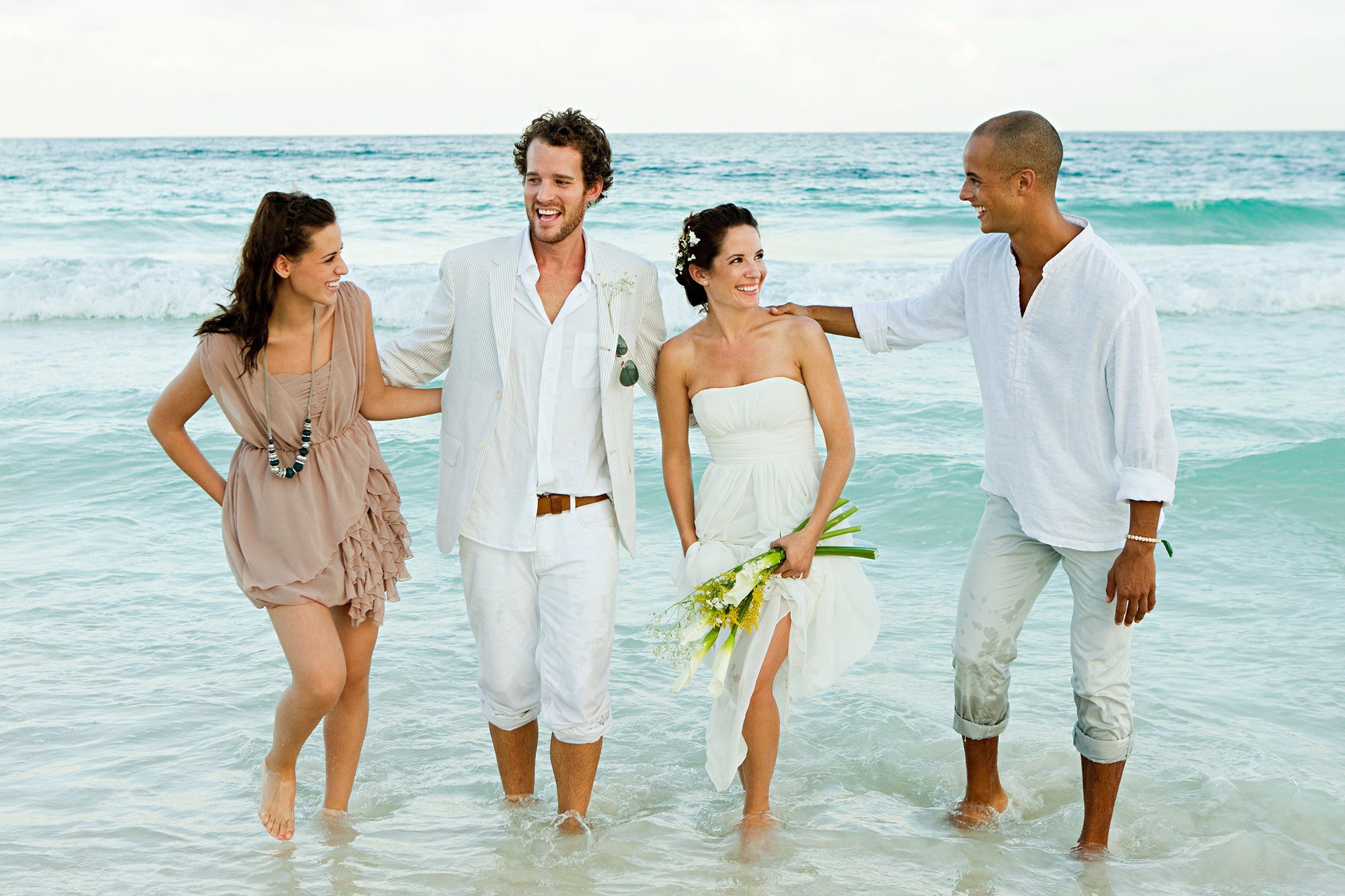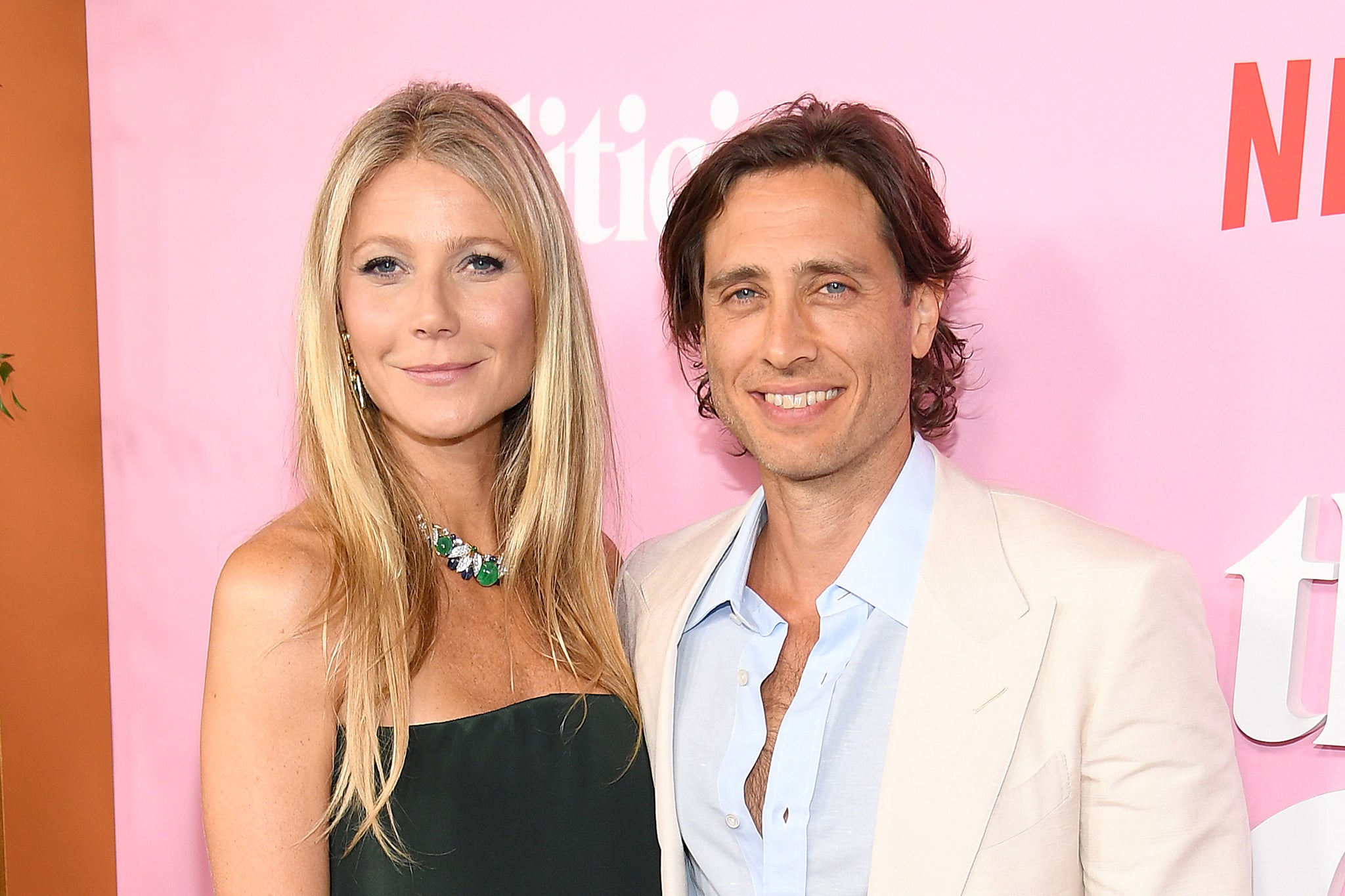Buddymooning is the new honeymooning – so why are so many people against it?
The hottest new trend in weddings is to go on honeymoon not just with your spouse but with your mates, too. But what does ‘buddymooning’ mean for your friendship group, your finances or your future marriage? Eloise Hendy speaks to experts and buddymooning couples about a very modern spin on tradition


Your support helps us to tell the story
From reproductive rights to climate change to Big Tech, The Independent is on the ground when the story is developing. Whether it's investigating the financials of Elon Musk's pro-Trump PAC or producing our latest documentary, 'The A Word', which shines a light on the American women fighting for reproductive rights, we know how important it is to parse out the facts from the messaging.
At such a critical moment in US history, we need reporters on the ground. Your donation allows us to keep sending journalists to speak to both sides of the story.
The Independent is trusted by Americans across the entire political spectrum. And unlike many other quality news outlets, we choose not to lock Americans out of our reporting and analysis with paywalls. We believe quality journalism should be available to everyone, paid for by those who can afford it.
Your support makes all the difference.Last summer, Marie-Claire Chappet and her husband tied the knot in the south of France. “Our honeymoon was planned as a road trip through Provence and then a week in Sicily,” she says. So far, so ordinary – yet, what wasn’t so ordinary about Marie-Claire’s honeymoon was that two of her friends came along. “We were very keen on encouraging anyone who wanted to, to join us for at least the French part of it,” Marie-Claire says. “It was one of my bridesmaids and her husband, who are both best friends of mine from university, who took us up on our offer.”
At this stage, some not-so-newlyweds might think that Marie-Claire and her husband lost their minds in the Provençal lavender haze. Isn’t the whole point of a honeymoon to have a romantic, relaxing time with your new spouse, alone? Wouldn’t bringing your mates along ruin some of the fun? Well, all the trad-heads out there will have to get with the times, because while the popularity of Provence may prove eternal, mere two-person honeymoons are officially passé. Now, if you want to kick off your marriage in the coolest way possible, it’s all about “buddymoons”.
OK, so maybe this is a slight exaggeration – “buddymoons” haven’t taken off to such an extent that every couple getting hitched this year are adding twin beds to their honeymoon suites. But it’s safe to say that honeymooning with friends has become a bit of a trend. Across Instagram and TikTok, many who are “just married” are showing off their post-nuptial group trips. Whether they’re hiking in Nova Scotia, cruising around Capri, or swimming off the Amalfi coast, they’re doing it all with a gaggle of mates in tow. “This is your sign to bring your buds on your honeymoon,” one TikTok declares, over footage of a friendship group apres-skiing in the French Alps. And, it has to be said, they look like they’re having a whale of a time.
“Many couples, predominantly those in their twenties and thirties, are bucking tradition,” says relationship and sexuality expert Courtney Boyer. “Choosing to take a buddymoon instead of a honeymoon is one way. We’ve emerged from a post-Covid world and realised the importance of community and lived experiences. Buddymoons combine those. They’re a fun excuse to find a reason to travel and celebrate a milestone with good friends.” But, even if they’re a laugh, shouldn’t your honeymoon feel a bit different from, well, any old group holiday? And buddymooners must inspire a few raised eyebrows, right?
Marie-Claire was certainly quick to realise that not everyone got the buddymoon memo. “The day after the wedding we had a chilled lunch on the lawn for all our guests,” Marie-Claire says, “and one of the main conversations was the fact that we were bringing a couple on honeymoon with us.” Some of the resulting curiosity seemed to have a distinctly suggestive undertone to it; Marie-Claire believes their plan to go with another couple “elicited more surprised reactions than if we had brought along a big group of friends.” “It just feels very White Lotus,” one friend quipped – a joke that Marie-Claire’s buddymoon group ran with “to the extent that several staff members at the hotel were definitely convinced we were swingers.” But if there was any residual doubt about how Marie-Claire’s buddymoon quartet were received, that was put to bed when she and her husband stayed at their Provence hotel’s sister location in Paris later in the year. “One of the waiters who had transferred there recognised us and said ‘ah yes, you were one of those couples’,” she recalls.
Despite the slightly smutty aspersions being cast, Marie-Claire says her buddymoon “worked brilliantly”. “We picked [our friends] up from their hotel the Monday morning after the wedding and drove them to Provence,” she explains. “We were staying in a five-star hotel in a little hilltop village and they managed to book a gorgeous Airbnb in walking distance from us. We treated them to lunch there on arrival and the hotel was wonderful about allowing them into the restaurant and bar in the evenings and to the pool area during the day.”
People couldn’t get their heads around the fact we weren’t just going on our own. It was hilarious watching people’s reactions when we told them we were on our honeymoon, seeing them trying to figure out what the group dynamic was
The way Marie-Claire describes it, her buddymoon sounds like an idyllic fantasy. There was a practicality to it, too. After all, the two couples were already in the south of France. Rather than reflecting a contemporary urge for the non-conventional, the boom in buddymoons perhaps stems from the broader boom in destination weddings. Destination wedding planner Chelsea Hargreaves suggests that “these buddymoon-type situations are typically a lot more common with destination weddings than they are with UK-based weddings, largely due to the simple fact that both the couple and friends are already abroad.” She takes the weddings she’s organised in Santorini as an example: “the isle of Mykonos is so close by and group-friendly that it’s an ideal way to carry on the excitement of the wedding.” After their France wedding in August, for instance, Bachelor in Paradise stars Hannah Godwin and Dylan Barbour travelled to Mykonos with 13 friends. “Since we were already having a destination wedding, we thought, ‘Well, if all of our closest friends are already in Europe, why not keep the party going?’” Goodwin told The New York Times.
Not every buddymoon can be explained simply by geography, though – some newlyweds are keen to “keep the party going” no matter the distance. After their wedding in Ireland last August, Clare Yelland and her husband also went away with another couple. “We went on what we nicknamed our ‘funnymoon’,” Clare says. She and her partner had decided not to go on their “big honeymoon” until 2025, but wanted a mini-moon in the meantime (the portmanteaus really write themselves). They settled on a place they’d been before: The Hilton in Dalaman, Turkey. The last time they’d been, it was with their friends Donna and Phil. “We were out one evening and we decided it wouldn’t be the same going without them, so they booked on too,” Clare says.
Like Marie-Claire, Clare found their plans prompted some “baffled looks” from friends and family. “I think people couldn’t get their heads around the fact we weren’t just going on our own,” she says. “It was hilarious watching people’s reactions when we told them we were on our honeymoon, seeing them trying to figure out what the group dynamic was.”
Who can really blame them? As BACP registered counsellor Georgina Sturmer puts it, “there’s a complex social dynamic to a ‘buddymoon’. It’s not quite a honeymoon but not quite a holiday.” This dynamic naturally prompts questions, she suggests: “Will the couple feel liberated at the idea that they’re enjoying themselves with their friends? Or will they regret missing out on that special one-on-one time that a honeymoon offers, and the recovery time that is required after the exhaustion of the wedding? Will they feel under pressure to host or pay for some elements of the full trip?”
With all these potential issues swirling about, Sturmer believes it’s important to be curious about the motivation behind having a buddymoon. “Maybe the happy couple are keen to move away from tradition and convention, and they feel as if a buddymoon reflects their friendships and social structure,” Sturmer says. “It might be seen as an intrinsic part of the wedding festivities, or perhaps it’s a final opportunity for them to have a blowout holiday with friends.” Sturmer also has concerns. “Maybe having a ‘buddymoon’ indicates an unwillingness to step away from the youthful freedom of a holiday with friends,” she says. “Perhaps there’s a fear that the couple might feel bored or frustrated or irritable with each other if it’s just the two of them on this holiday.” This, of course, would be quite a big “potential red flag,” Sturmer suggests, “that the couple might wish to explore before they make plans and put down deposits.”
Boyer flags similar worries. “One concern I have for buddymoons is for the couple that isn’t solid away from the group,” she says. “When they’re just left alone and they don’t find as much enjoyment together as they do with others, then a conversation needs to happen.” Traditionally, honeymoons are a time for a newly married couple to give each other their undivided attention. “When you’re with your friends,” Boyer says, “your new spouse may feel like they’re taking a backseat to the group, and you don’t have as much opportunity to do the more traditional honeymoon activities.”
To put it simply, even if you’re keen to bring your buds along, you might not want your whole honeymoon to be a buddymoon. This is something most buddymooners recognise themselves though. In Marie-Claire’s case, her pals only joined for the first two days of the trip, before she and her new husband hopped from France to Sicily. Clare and her partner swapped this around: “We had five days to ourselves and then Donna and Phil joined for the remaining five days.” For them, this was the perfect balance. “It was so much fun,” Clare says. “Leon and I got to enjoy the first five days together, then it was nice to have friends to have a laugh with.” The arrangement certainly brought advantages – Clare’s friends booked onto the honeymoon package upgrade, “so they got honeymoon perks despite being married for years”. They were also able to do things they wouldn’t have been able to as a pair. “We hired a yacht for the day and went out on it, just the four of us,” Clare says. “Myself and Donna got questionable tattoos one evening as a memory of the trip, which we are yet to get lasered off. We laughed until we cried some days.”
“I am grateful that we went on to have two weeks with just us on our honeymoon, but I wouldn’t change the buddymoon for the world,” Marie-Claire says. “I thoroughly recommend it. It was the best cure for post-wedding blues ever, as you otherwise go from a whole weekend being surrounded by all your loved ones and then suddenly it’s just you.” Instead, they eased into their new married life more gently, “and we had two best mates to debrief with about the wedding,” Marie-Claire adds. “It was delicious.”
Perhaps the most surprising thing is actually how long the traditional honeymoon has reigned supreme. “Relationship styles have evolved rapidly over the last few decades,” note Clara Zelleroth and Helga Johnsson Wennerdal, licensed psychologists specialising in couples therapy, and co-founders of couples therapy app Ally. “More couples are choosing to live together ahead of marriage, are marrying at a later stage in life and are having longer engagements,” they point out.

For long-term couples who have already travelled together, going away with friends may feel more novel, memorable, and fun. Then there are all the second, third and fourth marriages, and blended families to consider. Before they took off on TikTok, buddymoons got the Goop seal of approval. In 2019, Gwyneth Paltrow appeared on a US chat show and revealed her wedding to producer Brad Falchuk had been followed by “a big family honeymoon” with each of their kids and Paltrow’s ex, Chris Martin, in attendance. “So, my new husband and his children, my children, my ex-husband, our best family friends,” Paltrow said. Usually anything Gwynny endorses should probably be steered clear of from a safety standpoint (remember the exploding vagina candles?), but on this one she kind of has a point. If you have a modern blended family, why not have a modern honeymoon too?
“Some couples might find that discovering the world alongside their closest friends simply suits them better instead of travelling as a duo,” Zelleroth says. In the end, honeymoons should be like any other part of a relationship – up to the people involved to figure out and enjoy, without external judgement. As Johnsson Wennerdal says, “couples have the freedom to celebrate their honeymoon in the way that feels right for them, without feeling obligated to conform to societal expectations.”
It’s easy to see the appeal of travelling with a group – both to keep costs down, and to spend valuable time with the people you love. Soon the raised eyebrows and baffled looks may be a thing of the past. “I do see the trend of buddymoons growing,” Boyer says. “As long as the couple is still investing in their relationship with some quality one-on-one time, I think buddymoons are a fun trend that should stick around.”
Join our commenting forum
Join thought-provoking conversations, follow other Independent readers and see their replies
Comments